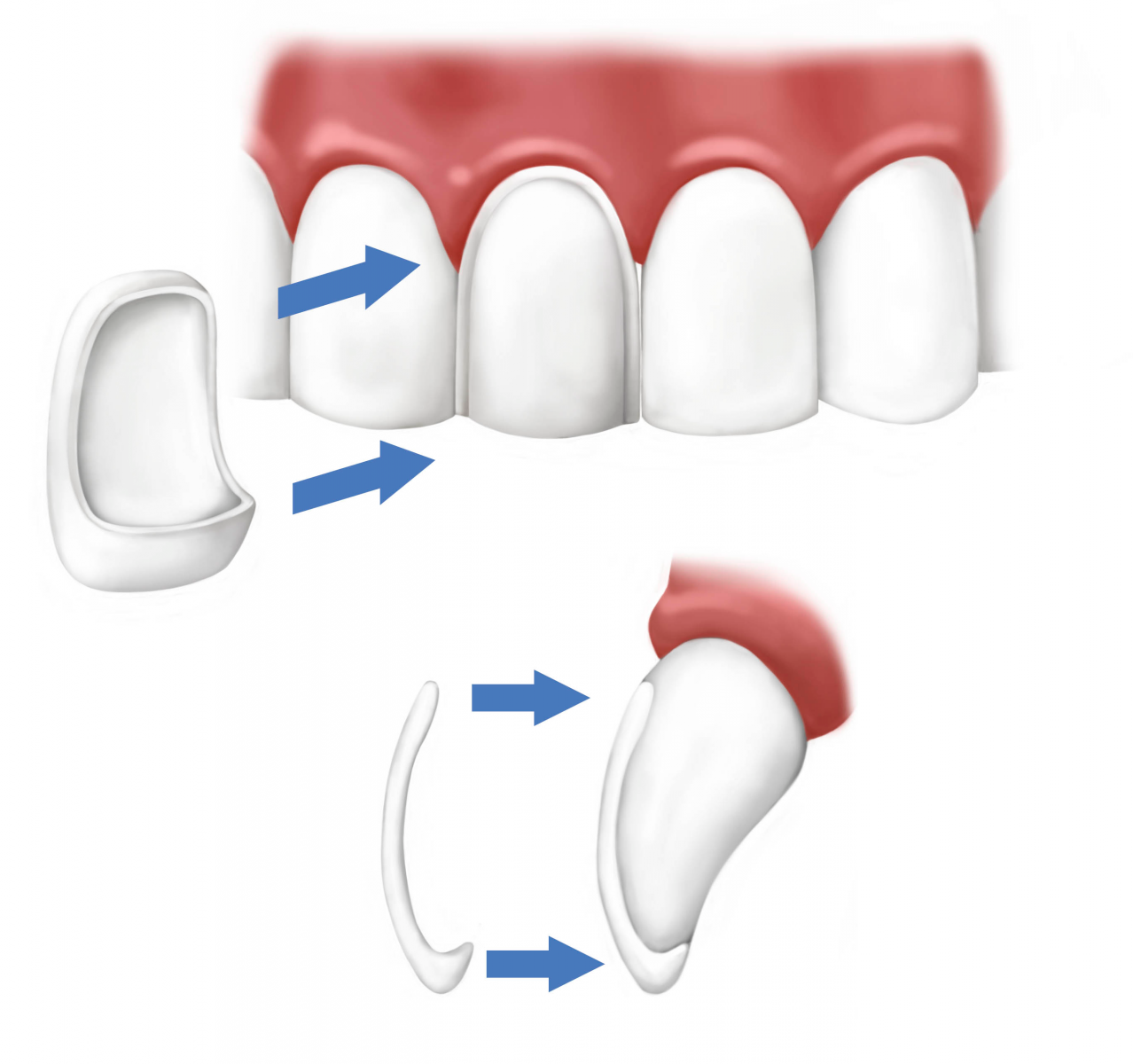Service - Veneers

Veneers are a popular treatment option for several reasons. Typically, they are placed on upper front teeth that are severely discolored, poorly shaped, or slightly crooked. Veneers may be used to lighten front teeth that are naturally yellow or have a gray cast and cannot be whitened by bleaching. Veneers are sometimes used to correct teeth that are chipped or worn. They also may be used to correct uneven spaces or a diastema (a large, noticeable gap between the upper front teeth).
TYPES OF VENEERS
There are two types of veneers: ceramic veneers (sometimes called laminates) and resin-based composite veneers.
Ceramic veneers: Ceramic veneers are extremely thin shells made of a strong and durable dental porcelain. The dentist removes only a small amount of enamel from the front and sides of the tooth. This makes room for the veneer and prevents the restored tooth from feeling or looking bulky, over-contoured, and unnatural.
Next, the dentist takes an impression of the prepared teeth so that the shape of the preparations and surrounding teeth can be replicated in the dental laboratory. The dentist also looks for the shade that will best match or blend with the other teeth. The impressions are sent to a dental laboratory that will make the ceramic veneers to fit your individual teeth.
At the next visit, the dentist places the veneers on the teeth to check the fit, shape, and color match. Both the dentist and the patient need to be satisfied with the craftsmanship and esthetics prior to final cementation. After any adjustments the teeth are cleaned and the ceramic veneers are bonded to the teeth with a cement. Further adjustments may be done at a subsequent appointment if necessary or desired.
Resin-based composite veneers: Resin-based composite veneers are generally placed in one appointment. After the tooth is prepared or reshaped the dentist carefully bonds and sculpts the composite material in a color that matches your existing teeth. A special light is used to harden the composite. The veneer is smoothed and polished to look like a natural tooth.
CHOSING VENEERS: CONSIDERATIONS
Teeth must be healthy and free of decay and active periodontal (gum) disease. Veneers typically require less removal of tooth enamel than do crowns. However, the process is not reversible once the enamel is removed.
Patients who clench or grind their teeth are often not good candidates for veneers because the thin veneer may chip, break, or peel. A nightguard may be recommended to help preserve the integrity of the veneers in this situation. Avoid biting your fingernails and chewing hard objects, such as pencils and ice. Like any dental restoration, veneers can wear and become dislodged over time. In that case, new ones may need to be fabricated. No special maintenance is needed other than good oral hygiene each day. Brush twice a day with fluoride toothpaste and clean between your teeth at least once a day with floss. Regular dental visits are a must for maintaining healthy teeth and protecting your smile.
If you are interested in discussing this option further please contact our office. We will schedule an appointment to thoroughly discuss your expectations and treatment options to see if veneers are right for you.







 Web Design by Sleepless Media
Web Design by Sleepless Media